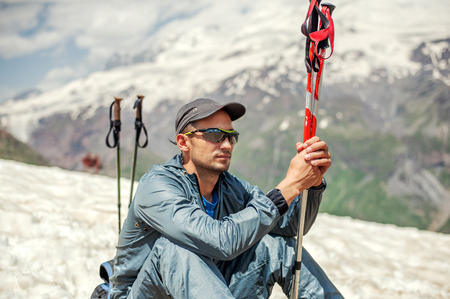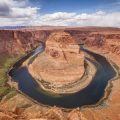1. Introduction to Seasonal Backcountry Planning
Exploring the backcountry in the United States is an incredible way to connect with nature, but it’s important to remember that each season brings its own set of challenges and opportunities. From snowy peaks in the Rockies to sun-soaked deserts in the Southwest, America’s diverse climates mean that planning for a multi-day trip is never a one-size-fits-all process. No matter if you’re heading out in spring, summer, fall, or winter, understanding how different seasons impact your adventure is essential for a safe and enjoyable experience.
Why Seasons Matter for Backcountry Trips
Weather conditions can change dramatically throughout the year—and even from day to day. These changes affect everything from trail accessibility to wildlife behavior, water availability, and personal safety. For example, spring snowmelt can make river crossings risky, while summer heat may require extra water planning. Fall brings shorter daylight hours and cooler nights, and winter demands specialized gear and skills for traveling on snow or ice.
How US Regions Differ by Season
The US covers a vast range of landscapes, each reacting differently to seasonal shifts. Here’s a quick overview of what you might expect:
| Region | Spring | Summer | Fall | Winter |
|---|---|---|---|---|
| Pacific Northwest | Rainy, muddy trails, late snowmelt at high elevations | Mild temps, bugs common, lush greenery | Crisp air, colorful foliage, early storms possible | Heavy rain or snow at higher elevations |
| Rocky Mountains | Unpredictable weather, lingering snowpack | Warm days, cold nights, thunderstorms | Early snowfall possible, cooler temps | Snowy conditions dominate; avalanche risk |
| Southwest Deserts | Pleasant temps, wildflowers bloom | Extremely hot days—heat precautions needed | Cooler evenings, milder days | Mild days but cold nights; flash flood risk after rain |
| Northeast & Appalachians | Mud season, black flies emerge | Humid with thunderstorms; dense foliage | Breathtaking colors, chillier nights | Ice and snow common; icy trails possible |
The Importance of Careful Year-Round Planning
No matter when or where you go, thoughtful preparation is key. This means checking weather forecasts before heading out, packing season-appropriate gear (like rain jackets in spring or microspikes in winter), and being flexible with your route or timing. By understanding how each season shapes your chosen destination—and knowing what to expect—you’ll be better equipped for a safe and memorable backcountry adventure all year long.
2. Winter Adventures: Challenges and Preparation
Planning a multi-day backcountry trip during the winter in the US is both thrilling and demanding. With snow-covered trails and chilly weather, you’ll need to pay extra attention to safety, gear, and your overall trip plan. Here are some key considerations to help you confidently enjoy winter’s beauty while staying safe and comfortable.
Snow Travel: Moving Through a Winter Wonderland
Traveling through snow means your pace will be slower, and navigation can be more challenging. Trails might be hidden under deep snow, so make sure you’re comfortable with map reading and using a compass or GPS. Breaking trail through fresh powder is hard work—plan shorter daily distances than you would in summer.
Essential Snow Travel Gear
| Gear | Purpose |
|---|---|
| Snowshoes | Prevent sinking into deep snow; easier walking on powdery terrain |
| Crampons or Microspikes | Provide traction on icy surfaces; essential for steep or hard-packed sections |
| Trekking Poles (with snow baskets) | Extra stability and support when walking on uneven snowy ground |
Avalanche Risk: Recognizing and Managing Danger Zones
Avalanches are a real hazard in many US mountain regions, especially after heavy snowfall or rapid temperature changes. Before heading out, always check local avalanche forecasts (like those from the American Avalanche Association). Avoid steep slopes (generally 30–45 degrees), travel one at a time across suspect areas, and know how to use avalanche safety gear.
Avalanche Safety Essentials
- Avalanche beacon/transceiver
- Probe
- Shovel
- Knowledge of avalanche rescue techniques
Shorter Daylight Hours: Timing Your Itinerary
In winter, the sun sets early—sometimes as early as 4:00 PM in northern states. Start your days early, plan campsites with plenty of time before dark, and always bring reliable headlamps with extra batteries.
Staying Warm: Smart Layering and Shelter Choices
The right clothing can make all the difference. Layering keeps you warm while allowing you to adjust as conditions change.
| Layer Type | Examples & Tips |
|---|---|
| Base Layer | Moisture-wicking long underwear (avoid cotton) |
| Insulation Layer | Fleece or down jacket for warmth |
| Outer Shell | Waterproof/windproof jacket & pants for protection from snow and wind |
| Accessories | Warm hat, gloves/mittens (bring an extra pair), wool socks, gaiters for deep snow |
Select a four-season tent that can handle snow load and strong winds, plus a sleeping bag rated for temperatures lower than you expect. Don’t forget an insulated sleeping pad for comfort and extra warmth against the cold ground.

3. Spring Transitions: Melting Snow and Changing Trails
How Spring Affects Backcountry Adventures
Spring in the US backcountry is a beautiful but unpredictable time for multi-day trips. As winter snow begins to melt, trails transform quickly—sometimes overnight! While wildflowers start blooming and wildlife becomes more active, spring also brings unique challenges for hikers and backpackers. Here’s what to expect and how to plan safely:
Unpredictable Weather Patterns
Spring weather can change in a flash. One day might be sunny and warm, while the next brings rain or even late-season snow. Always check local forecasts before heading out, and pack layers to stay comfortable no matter what Mother Nature has planned.
Muddy Trails & Fast-Flowing Streams
Melting snow means trails can become muddy, slippery, or even impassable. Rivers and creeks swell with runoff, sometimes covering trail crossings that were dry just weeks before. Waterproof boots, trekking poles, and gaiters help keep your feet dry and stable. Be prepared to reroute or turn back if water levels are unsafe.
| Spring Challenge | What You Can Do |
|---|---|
| Muddy Trails | Wear waterproof footwear; use trekking poles for balance; stick to the trail to avoid widening paths. |
| High Water Crossings | Avoid crossing if the water is fast or above your knees; look for safer spots upstream; consider alternate routes. |
| Sudden Storms | Pack rain gear; bring an extra warm layer; set up camp away from low-lying areas prone to flooding. |
| Wildlife Encounters | Store food properly; make noise on the trail; know what to do if you see bears or other animals. |
Increased Wildlife Activity
Many animals come out of hibernation or return from migration during spring. This is a wonderful opportunity for wildlife watching—but remember, animals are busy feeding and may be protective of their young. Respect their space and always follow Leave No Trace principles.
Flexible Planning Tips for Spring Trips
- Have backup routes: If your chosen trail is too wet or snow-covered, switch to lower-elevation options.
- Pace yourself: Muddy conditions can slow you down—plan shorter distances each day.
- Check for closures: Some parks close high-country trails in spring due to dangerous melt conditions. Check with rangers before you go.
- Share your plans: Let someone know your itinerary, as conditions can change quickly in spring.
With thoughtful preparation and a flexible mindset, spring can be one of the most rewarding times for backcountry travel in the US. Enjoy the renewal of nature—and stay safe!
4. Summer Highs: Heat, Crowds, and Wildfires
Managing Extreme Heat and Staying Hydrated
Summer is a popular time for backcountry trips in the US, but high temperatures can turn an adventure into a health risk. Always check the weather forecast before you head out and plan your hiking schedule to take advantage of cooler morning or evening hours. Wearing light, breathable clothing and a wide-brimmed hat can help you stay cool. Remember, dehydration sneaks up quickly in the heat! Bring more water than you think youll need—especially in dry western states where water sources may be scarce.
| Region | Heat Challenge | Water Tips |
|---|---|---|
| Southwest (e.g., Arizona, Utah) | Extreme midday heat, little shade | Carry 4+ liters/day per person; use hydration reservoirs |
| Sierra Nevada & Rockies | High elevation sun exposure | Refill at streams/lakes; always filter or treat water |
| Southeast (e.g., Smokies) | Hot, humid conditions; slow sweat evaporation | Electrolyte tabs or drink mixes help replenish salts lost through sweat |
Crowded Trails: Popular vs. Off-the-Beaten-Path Destinations
The summer months bring crowds to iconic trails like Yosemite’s John Muir Trail, Colorado’s Rocky Mountain National Park, and the Appalachian Trail. While these destinations are famous for good reason, consider exploring lesser-known gems to enjoy solitude and easier logistics.
| Popular Destinations | Lesser-Known Alternatives |
|---|---|
| Zion Narrows (Utah) | Cedar Mesa Canyons (Utah) |
| Half Dome (California) | Ansel Adams Wilderness (California) |
| Great Smoky Mountains NP (Tennessee/North Carolina) | Cherokee National Forest (Tennessee) |
| Glacier National Park (Montana) | Bitterroot Mountains (Montana/Idaho border) |
Bugs and Insect Protection
Mosquitoes and ticks are at their worst in many regions during summer. Pack lightweight long sleeves and pants, apply EPA-approved insect repellent, and consider using a head net if bugs are thick. After hiking, check yourself carefully for ticks—especially in the Midwest and East Coast where Lyme disease is a concern.
Wildfire Awareness and Safety
Drought and lightning storms make wildfires a real threat in much of the West from late June through September. Before your trip, check wildfire maps and air quality reports online. Never build illegal campfires, follow posted fire restrictions, and know your evacuation routes just in case.
Quick Wildfire Safety Checklist:
- Check current fire bans: Visit local forest service websites before you go.
- Stay updated: Carry a small radio or use a satellite communicator for alerts when out of cell range.
- If smoke is visible: Change your route or exit the area immediately.
- Avoid open flames: Stick to backpacking stoves instead of campfires.
- Poor air quality: Consider postponing your trip if smoke levels are high.
Your Summer Adventure Awaits!
With some extra planning—hydration, bug protection, crowd management, and fire safety—you can enjoy incredible multi-day backcountry adventures across the US all summer long. Whether you stick to classic parks or strike out on quiet trails less traveled, being prepared ensures a safe and memorable journey.
5. Fall Rewards: Fewer Crowds and Unpredictable Weather
Fall is a magical time for backcountry trips in the US. As summer winds down, popular trails and campsites become much quieter, giving you a rare sense of solitude. The scenery transforms with vibrant foliage, crisp air, and golden sunlight—a photographer’s dream and a peaceful escape for anyone seeking a break from the busy summer crowds.
Benefits of Fall Backcountry Adventures
One of the main perks of heading out in the fall is that you’ll likely have trails, campsites, and viewpoints mostly to yourself. Wildlife is also more active as animals prepare for winter, so it’s a great time for spotting deer, elk, or even bears (from a safe distance!). Plus, cooler temperatures make hiking and backpacking more comfortable compared to the sweltering heat of summer.
What to Plan For: Fall Weather Challenges
While fall brings many rewards, it also comes with some unique challenges. Weather can change quickly—sunshine in the morning may turn into rain or even snow by afternoon, especially at higher elevations. Nights get colder and longer, so you’ll need warmer layers and sleeping gear to stay cozy and safe.
Key Planning Tips for Fall Trips
| Consideration | What to Prepare |
|---|---|
| Cooler Nights | Bring an insulated sleeping bag (rated at least 10°F lower than forecast lows) and extra warm clothing layers like hats, gloves, and thermal underwear. |
| Unpredictable Weather | Packing a reliable rain jacket, waterproof footwear, and a weatherproof tent is crucial. Always check local weather forecasts right before your trip. |
| Shorter Daylight Hours | Plan your hikes earlier in the day and carry a headlamp with fresh batteries. Know your route well to avoid getting caught out after dark. |
| Early Snowfall (at higher elevations) | If traveling in mountainous areas, be ready for early season snow—microspikes or trekking poles may help on icy trails. Always let someone know your plans. |
With thoughtful preparation, fall can be one of the most rewarding times to experience America’s backcountry. Embrace the quiet beauty of this season while staying flexible and ready for whatever nature brings your way!
6. Regional Differences and Local Resources
When planning a multi-day backcountry trip anywhere in the US, its important to remember that conditions can vary dramatically between regions, even at the same time of year. Understanding these differences—and knowing where to find accurate, up-to-date information—can help you stay safe and have a great adventure.
Regional Planning: From Rainforests to Deserts
The Pacific Northwest is known for its lush forests and abundant rainfall, especially in spring and fall. Trails can be muddy or washed out, snow may linger on higher elevations well into summer, and weather can change rapidly. In contrast, the Southwest features arid deserts and dramatic temperature swings between day and night. Summer heat can be extreme, while winter nights may bring freezing temperatures—even snow in higher desert areas!
| Region | Key Seasonal Considerations | Common Hazards |
|---|---|---|
| Pacific Northwest | Rain, lingering snowpack (spring/early summer), muddy trails, short daylight (winter) | Mudslides, hypothermia, slippery terrain |
| Southwest | Extreme heat (summer), cold nights (winter), flash floods (monsoon season) | Dehydration, sunburn, sudden storms |
| Rocky Mountains | Late snowmelt (high elevation), thunderstorms (summer), early frosts (fall) | Avalanches (spring), altitude sickness, lightning strikes |
| Southeast Appalachians | Humidity, rainstorms, hot summers, icy winters at elevation | Ticks & insects, slippery rocks, unpredictable weather changes |
Finding Reliable Trail and Weather Information
No matter where you’re headed, local knowledge is key! Here are some practical resources to help you plan your trip safely:
| Resource Type | Description / Examples |
|---|---|
| Official Land Agency Websites | US Forest Service, National Park Service, State Parks websites—look for trail updates and alerts. |
| Local Ranger Stations & Visitor Centers | The best source for current trail conditions and safety tips. Staff often know about recent weather events or closures. |
| Weather Forecast Tools | NOAA’s National Weather Service, Mountain-Forecast.com. Always check forecasts for both your start point and highest elevation on your route. |
| User-Generated Apps & Forums | AllTrails, Gaia GPS, local Facebook groups—great for recent trip reports and trail photos from other hikers. |
| Guidebooks & Maps (Print/Digital) | Still invaluable for backup navigation and understanding seasonal access points or water sources. |
Tips for Using Local Resources Effectively:
- If possible, call ahead to ranger stations before your trip—especially if traveling early or late in the season when conditions are more variable.
- Double-check the date of online trail reports; last week’s info might already be outdated after a storm!
- Ask about wildlife activity—bear encounters in the Rockies or rattlesnakes in the Southwest are highly seasonal.
- Packing lists should always reflect local advice: bear spray might be essential in Montana but unnecessary in Arizona.
- If hiking solo or as a woman adventurer, don’t hesitate to ask staff or online communities about specific safety concerns unique to your destination.
7. Conclusion: Year-Round Preparedness and Adaptability
Exploring the backcountry across America’s diverse seasons is an incredible adventure, but each time of year brings unique challenges and opportunities. Whether you’re hiking in the snowy Rockies or kayaking through lush summer forests, staying safe and making the most of your trip always comes down to preparation, flexibility, and respect for nature’s changes.
Final Tips for Staying Safe and Making the Most of Every Season
| Season | Key Considerations | Essential Gear | Safety Tips |
|---|---|---|---|
| Winter | Short daylight hours, snow/ice, risk of hypothermia | Insulated layers, traction devices, emergency blanket | Check avalanche forecasts, pack extra food, watch for frostbite |
| Spring | Muddy trails, unpredictable weather, high water levels | Waterproof boots, rain gear, trekking poles | Be cautious at river crossings, check trail conditions daily |
| Summer | Heat exposure, bugs, crowded trails | Sunscreen, bug spray, wide-brim hat | Start early to beat heat, stay hydrated, practice Leave No Trace |
| Fall | Crisp nights, hunting season overlaps, changing foliage | Layered clothing, blaze orange vest (for visibility) | Know local hunting schedules, prepare for cold snaps at night |
Emphasizing Flexibility and Preparation
- Always have a backup plan: Weather can shift quickly. Map out alternative routes or campsites in case plans need to change on the fly.
- Packing smart matters: Bring only what you need for the season but never skimp on safety essentials like a first aid kit and extra snacks.
- Keep someone informed: Share your itinerary with a trusted friend or family member before heading out—no matter the season.
- Respect wildlife and plants: Each season brings new life into the backcountry. Observe from a distance and avoid disturbing animals or trampling wildflowers.
- Tune into local knowledge: Check with park rangers or local outdoor groups for real-time tips on current conditions and hazards.
Your Adventure Awaits—All Year Long!
No matter when you head out on your next multi-day backcountry trip in the US, embracing adaptability will help you handle whatever nature throws your way. With thoughtful planning and an open mind, every season offers its own magic—so get out there and enjoy it safely!


